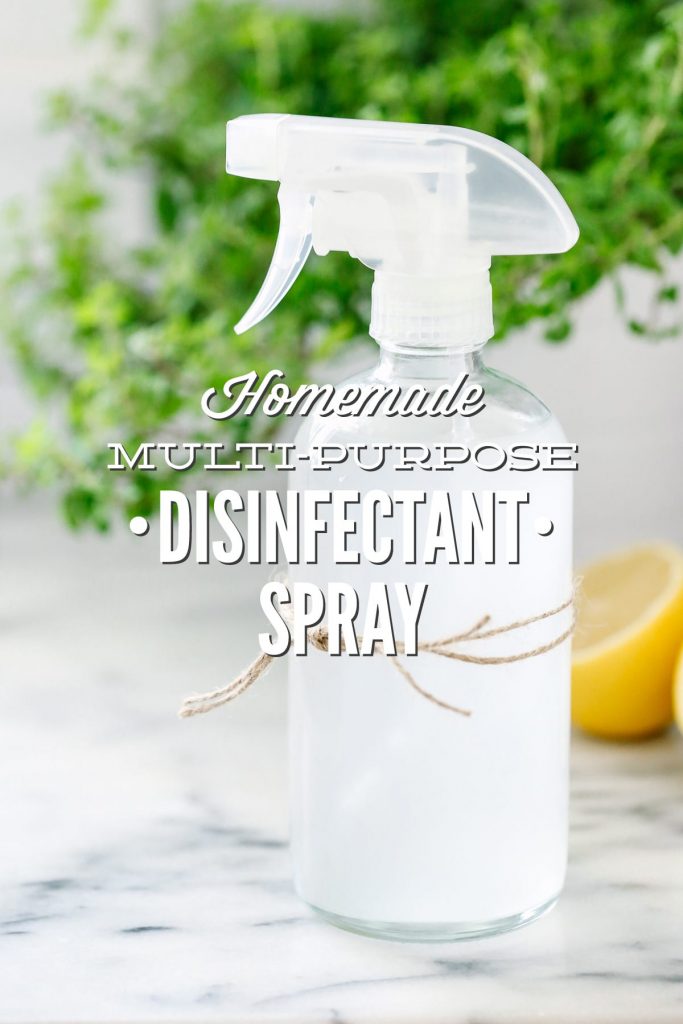
Want to Save This Article?
Enter your email & I’ll send it straight to your inbox. And you’ll get new recipes & tips each week.
Two weeks ago, Mrs. Sniffles knocked on our “door.” I tried to convince her to leave with my homemade remedies, but she insisted on staying, so for the last two weeks we’ve been battling an unwelcome guest and nasty sinus infections.
Mrs. Sniffles was sure to pack every “present” for her extended stay, too: runny nose, sore throat, tiredness, etc. Thankfully, after lots of rest, vitamin C, sore throat tea, elderberry syrup shots, and elderberry soda, Mrs. Sniffles finally decided to pack-up her remaining luggage and move on. Hallelujah! It’s wonderful to have energy and a clear head again.
As it turns out, our family isn’t the only family who’s been affected by Mrs. Sniffles. She’s quite the experienced traveler! The entire school district in Pinellas County (where we live) has been hit hard by her visits. Some schools have seen dramatic decreases in weekly attendance since January.
Right now is the perfect time to start talking about (and using) a light disinfectant spray. Or shall I say a replacement for the stuff found on store shelves? I’m sure most of us have vivid memories of heavily-perfumed sprays due to their popular use in restaurant bathrooms, homes, and even classrooms.
Just the other day I noticed a store-bought spray and its infamous, headache-inducing scent in the women’s bathroom at Dustin’s work. Honestly, I don’t blame his work (or others) for using a store-bought spray, because marketing would lead me to believe that a store-bought solution, full of mystery ingredients, is the only way to properly clean and disinfect a room. Personally, I never once thought about what was in those sprays before our real food conversion, or even thought that a simple alternative may be sitting in my pantry or medicine cabinet.
Alcohol may be used for much more than a strong cocktail. It’s also a very handy DIY ingredient, as well as vinegar and particular essential oils.
Disinfecting is an activity that’s (generally) done after cleaning and, in my cleaning opinion, needs to be done much less often in the average home. “Disinfecting…refers to killing a high percentage of the germs on a surface or rendering them incapable of reproducing.” (source)
Disinfecting takes care of more than just dirt, grease, or dust. I don’t believe disinfecting every surface on a regular basis is essential in a modern-day home, thanks to indoor plumbing and healthy hygiene practices. Now when Mrs. Sniffles comes knocking, or I cut raw meat on my favorite cutting board, I’m all about using a homemade disinfectant spray. PS: I share my preferred approach for disinfecting a cutting board at the bottom of my recipe.
And that, my friend, is exactly why I mixed up a bottle of my simple 3-ingredient homemade spray this past week. Take that Mrs. Sniffles!
More Natural Ways to Protect Against Unwanted Germs
- Homemade Hand Sanitizer Spray: A simple spray for when you need to wash your hands and don’t have soap and water.
- Homemade Hand Sanitizer Gel: Want a gel instead of a spray? This recipe is for you.
- Natural Ways to Boost the Immune System: My tried-and-true ways to naturally maintain a healthy and happy immune system.
- Homemade Elderberry Syrup: A homemade remedy that’s delicious and beneficial.
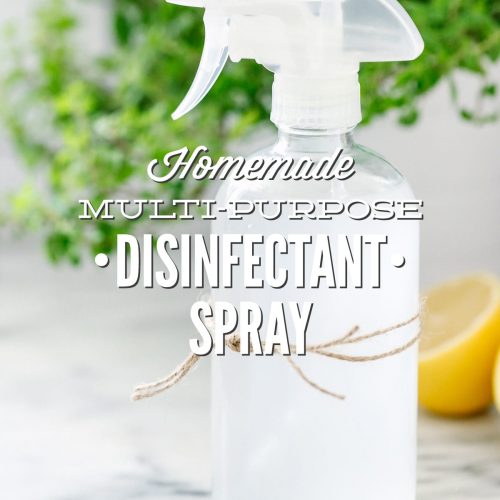
Homemade Multi-Purpose Disinfectant Spray
Ingredients
- 1 1/2 cups 100 proof alcohol (vodka) or higher get the highest proof alcohol you can find (in some states you can buy 190 proof, which is Everclear, if not at least 100 proof) or at least 70% isopropyl rubbing alcohol. Rubbing alcohol can damage painted and varnished surfaces so it's best to spot test first.*
- 1/2 cup white distilled vinegar or more alcohol
- 50-60 drops tea tree essential oil or lavender essential oil (optional)
Instructions
- Pour the vodka into a 16 ounce spray bottle and then the essential oil(s). Shake the bottle to combine the vodka and oils. Finally, add the vinegar and shake the bottle again. This recipe is not safe to use on special stone surfaces, like granite or marble, due to the vinegar. Please see the notes section below for more information.
- I've also used a Bandit Oil (Thieve's Oil or Germ Destroyer) blend in my spray instead of the tea tree essential oil. Learn more about the science behind using essential oils for disinfecting.
Notes
Disclaimer: The DIY recipes on this website are based on my personal experiences. I am not a trained chemist, cleaning specialist, or skincare expert. The DIY recipes shared on this website haven’t been tested in a lab. Information about my products or recipes haven’t been evaluated by the Food and Drug Administration. This information is not intended to diagnose, treat, cure, or prevent any disease. Please consult a doctor or specialist for specific concerns about any skincare issues, cleaning products, or dietary needs. Please use your discretion, based on your own research, when making homemade products.

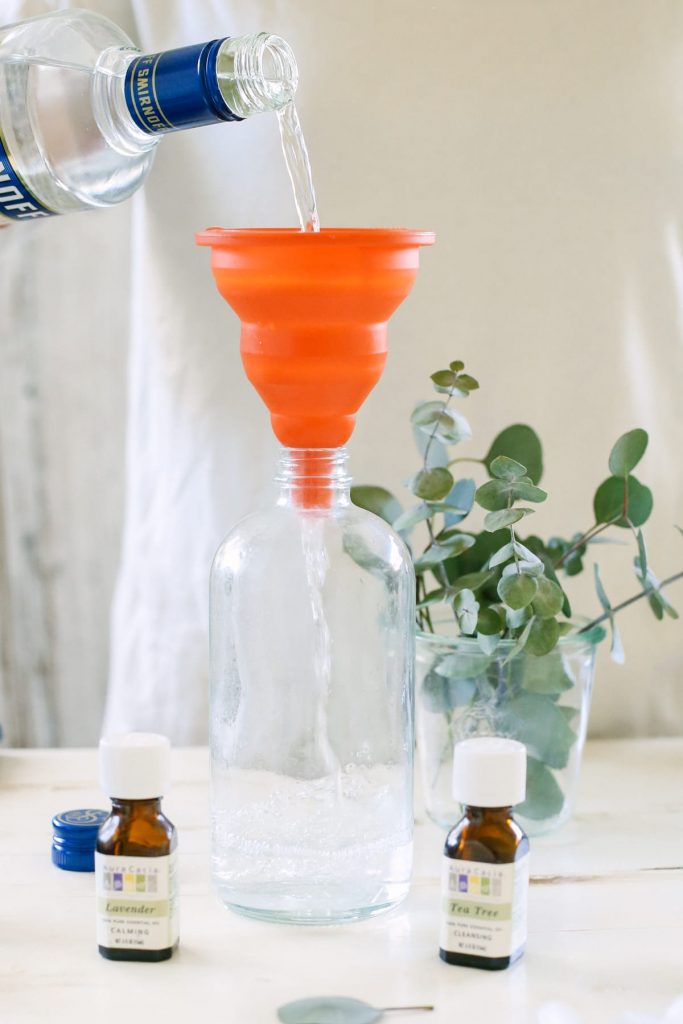
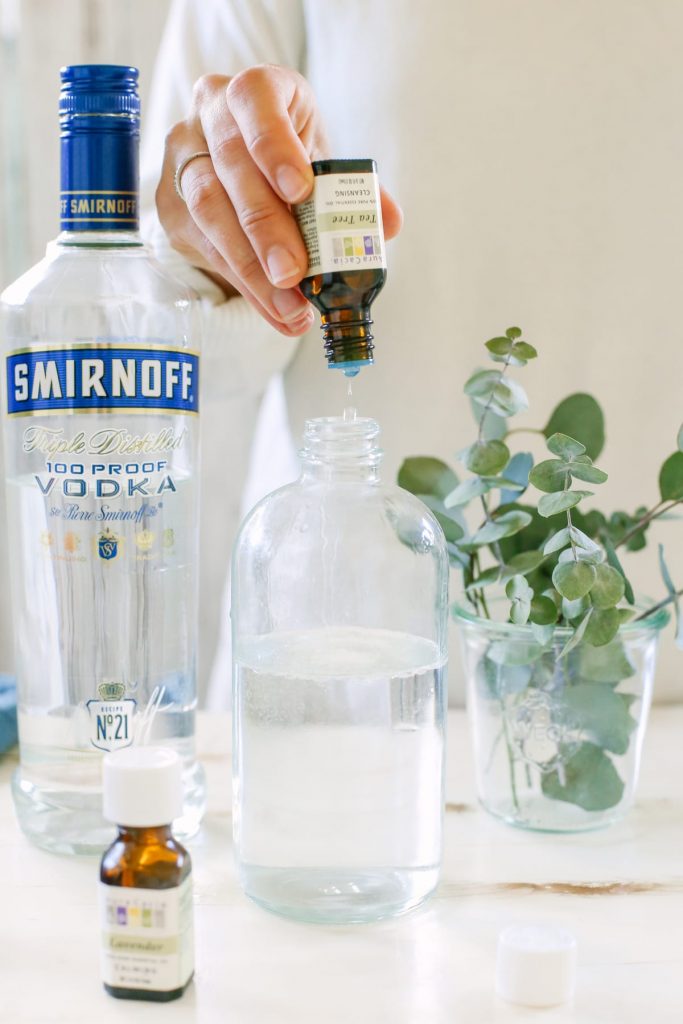
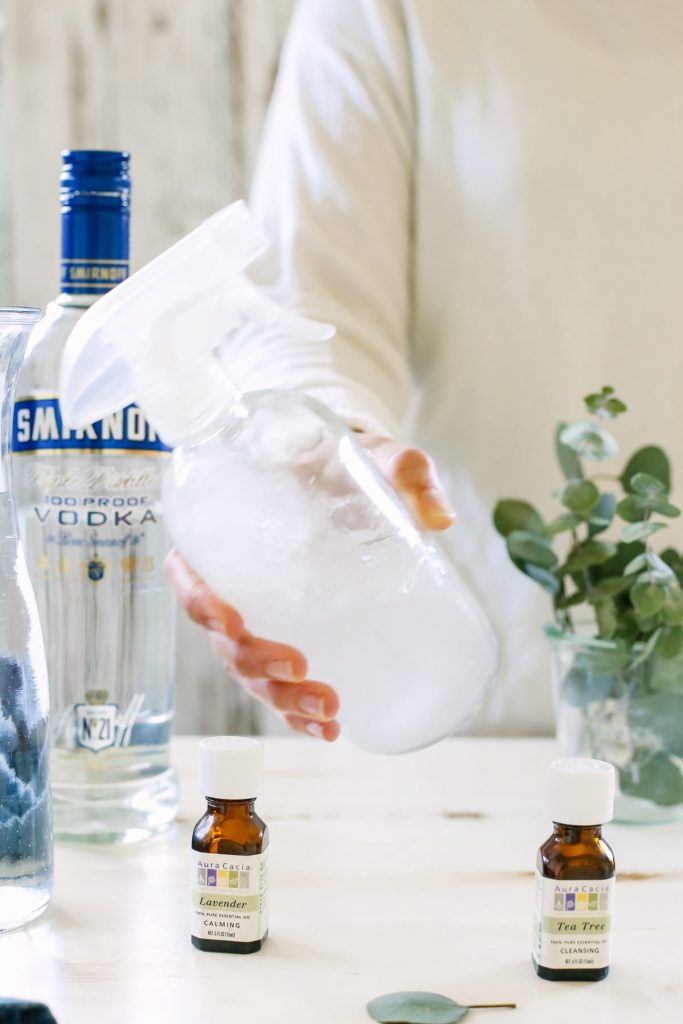
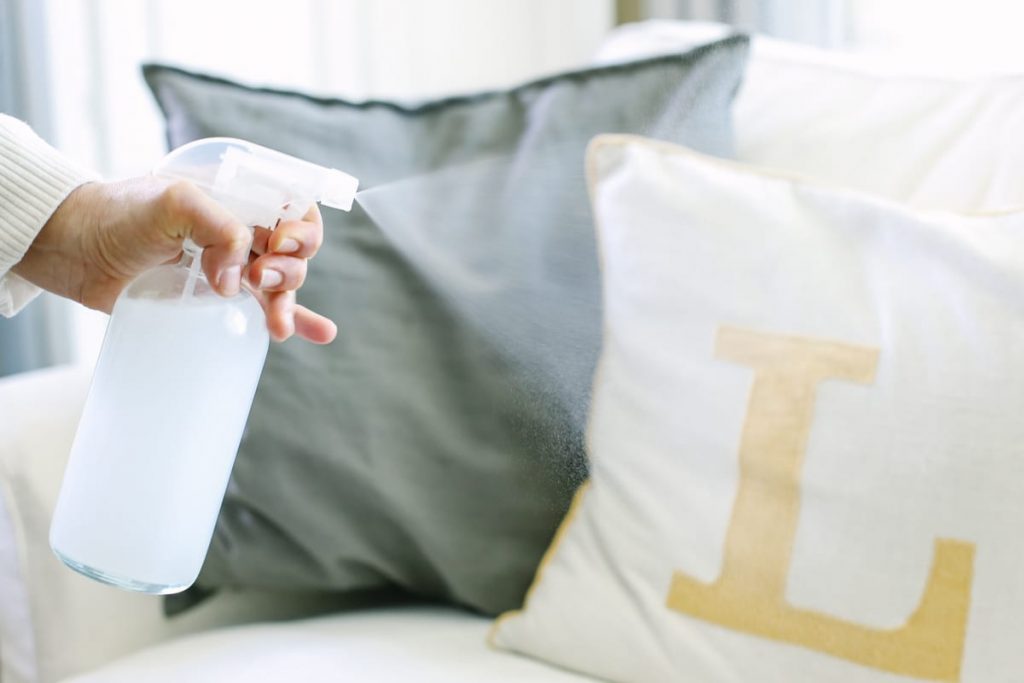
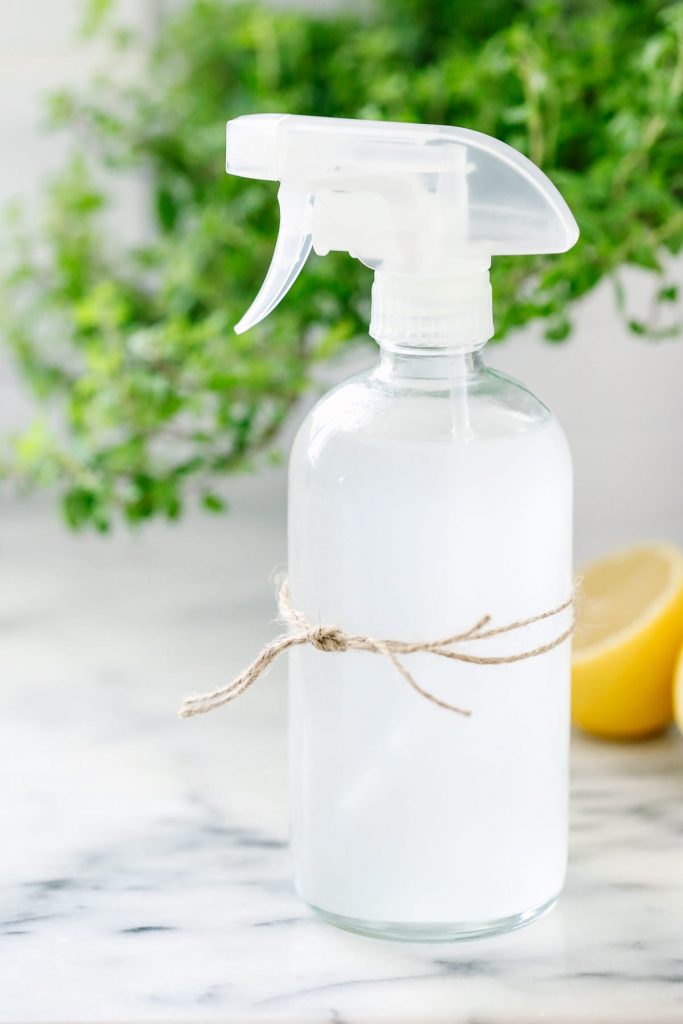
Hello,
My name is Liz and I am the WebAdmin for our Church website, http://www.pahoasacredheart.org. Since the Coronavirus came up, I have been looking on the internet for homemade sanitizers. I came across your recipe, followed your ingredients and I have to say, it is the BEST. I can’t thank you enough for coming up with this stuff.
I was wondering if it will be okay with you if I could link on our church website the recipe. We are located on the Big Island of Hawaii. We cannot find any hand sanitizers, disinfectant wipes, sprays, etc. All credit to you of course.
We will be forever grateful to you.
ps: I also have a blog and I would love to post and link your website.
Aloha, Liz M.
Hi Liz, thank you so much for the kind words! Means a lot to LS.
Yes, you are able to do that. Thanks for wanting to share!
LS Team.
Thank you for this amazing and wonderful DIY disinfectant ingredients, Kristin!
However, before I start making this, I want to ask two questions: 1) Can I use this spray to disinfect clothes & 2) Is this ‘baby-friendly’, where in I can use to clean baby toys?
Hi Daniel,
Yes to clothes but I’m not sure about “baby-friendly”.
LS Team.
Thank you for replying, Chardea!
Happy to find this, as I’m allergic to Lysol
Yay! Happy it works for you!
LS Team.
Please use something else other than Tea Tree Oil if you have pets. Tea Tree oil is toxic to pets.
PS (Lavender oil is toxic to cats also — but not for dogs. Why? Because dogs’ livers process chemicals/oils differently than do cats’ livers.)
Thanks for sharing, Re Almanace! Appreciate the pet information.
Is this much Tea Tree safe for use around pets? I’m just starting looking for a receipe and I’m curious. Thank you
Can I use gin instead of vodka for this recipe?
Hey Lyn, Use the highest proof alcohol possible
If you have pets, make sure you check which essential oils are toxic to them before you start mixing and spraying! Tea tree doesn’t play nice with cats, for example.
Would you recommend using Oregano essential oil either with or in place of the Tea Tree oil? I’ve read that it is a great disinfectant.
You could definitely try it. I personally always have tea tree on hand so that’s my go-to.
I made this recipe using vinegar, rubbing alcohol and thieves for the substitutions. I do not recommend that at all. It came out smelling like a Big Mac!!! Lol
So glad I found your blog! I bought your book too!! After my daughter ate some store bought carpet powder (she’s fine, thank God!) and after fighting a bout of strep throat in my home, I think I’m ready to make the switch to some natural cleaning solutions!
Quick question on this disinfectant spray: what is its shelf life?
What if I do not have the oils
Hey francine, I wouldn’t make this recipe. I would use 100% vinegar then.
Love your ideas. Instead of using an essential oil, could you heat the water along with some herbs such as rosemary or lavender, then steep and strain?
Hi- Does this have to be in a glass bottle? Or can one use a plastic spray bottle too?
Hey Michelle, You can use plastic.
So what about 80 proof or the 100 proof ? It seems most people purchase higher proofs for cocktails…….funny how anyone commenting is an expert ? I mean really who buys less than 80 proof?….I guess Brian ??? I think you should remove Brian’s comment ??
80 proof means 40% alcohol, Raquel.
Thanks, Mona for answering this. 120-proof contains 60% alcohol, and 80-proof means 40% of the liquid is alcohol
After reading through the comments, will both of these recipes work as kitchen wipes and spray:
1/2 distilled or boiled water
1/2 white distilled vinegar
50-60 drops tea tree essential oil
or
3/4 distilled or boiled water
1/2 white distilled vinegar
1/2 high proof vodka or rubbing alcohol
50-60 drops tea tree essential oil
Also, would both of these recipes keep for a month?
With distilled water, my maximum storage is usually a month.
Hi Lo, I’ve used both recipes in my home.
Could you everclear instead of vodka?
Hey Shannon, Yes, definitely! That would be even better. I suggest Vodka since everclear can be difficult to find in some places.
Like the idea of this recipe but it will sure open your sinuses! When using the rubbing alcohol and vinegar can I increase the water to a cup to help with the strong smell ? Or will that decrease the effectiveness of disenfecting?
Also how long does the solution need to sit on a surface to actually disenfect it?
Thanks for reading all of this!
I actually. Used wintergreen rubbing alcohol , vinegar, and water only. No oils. Im using it to disinfect the couch I slept on when I had a cold. It smells minty fresh now.
Sounds good, Janel!
how long can this recipe be effective/potent? I probably can’t finish the whole bottle in one go. Of course I can always reduce the proportion but i wanted to avoid the hassle
Hey Mary, It will keep for a month. You can decrease the amounts, too, if needed.
Can I use peppermint instead of tea tree
Hey Natasha, Yes, you can. Although tea tree is preferred.